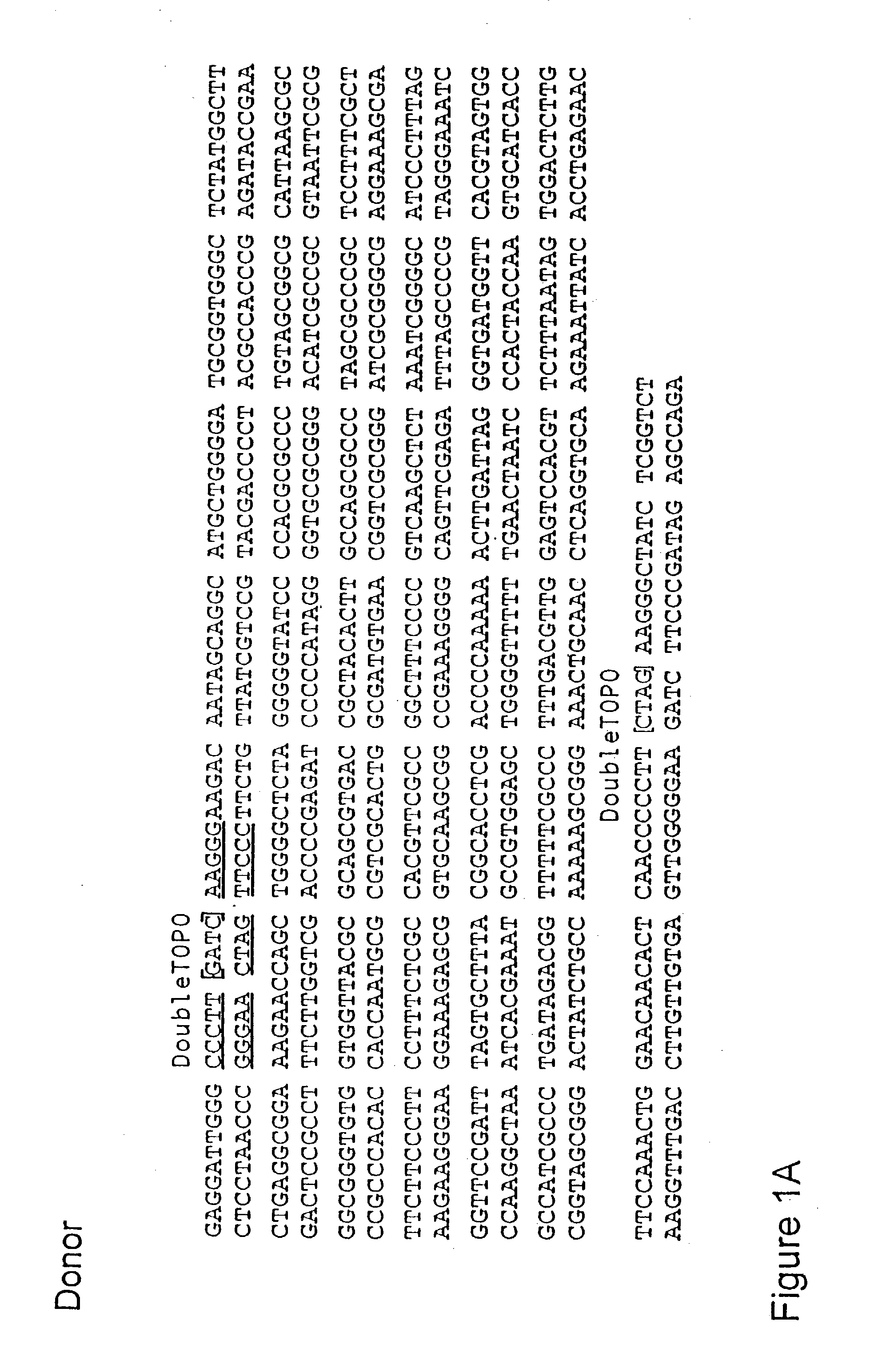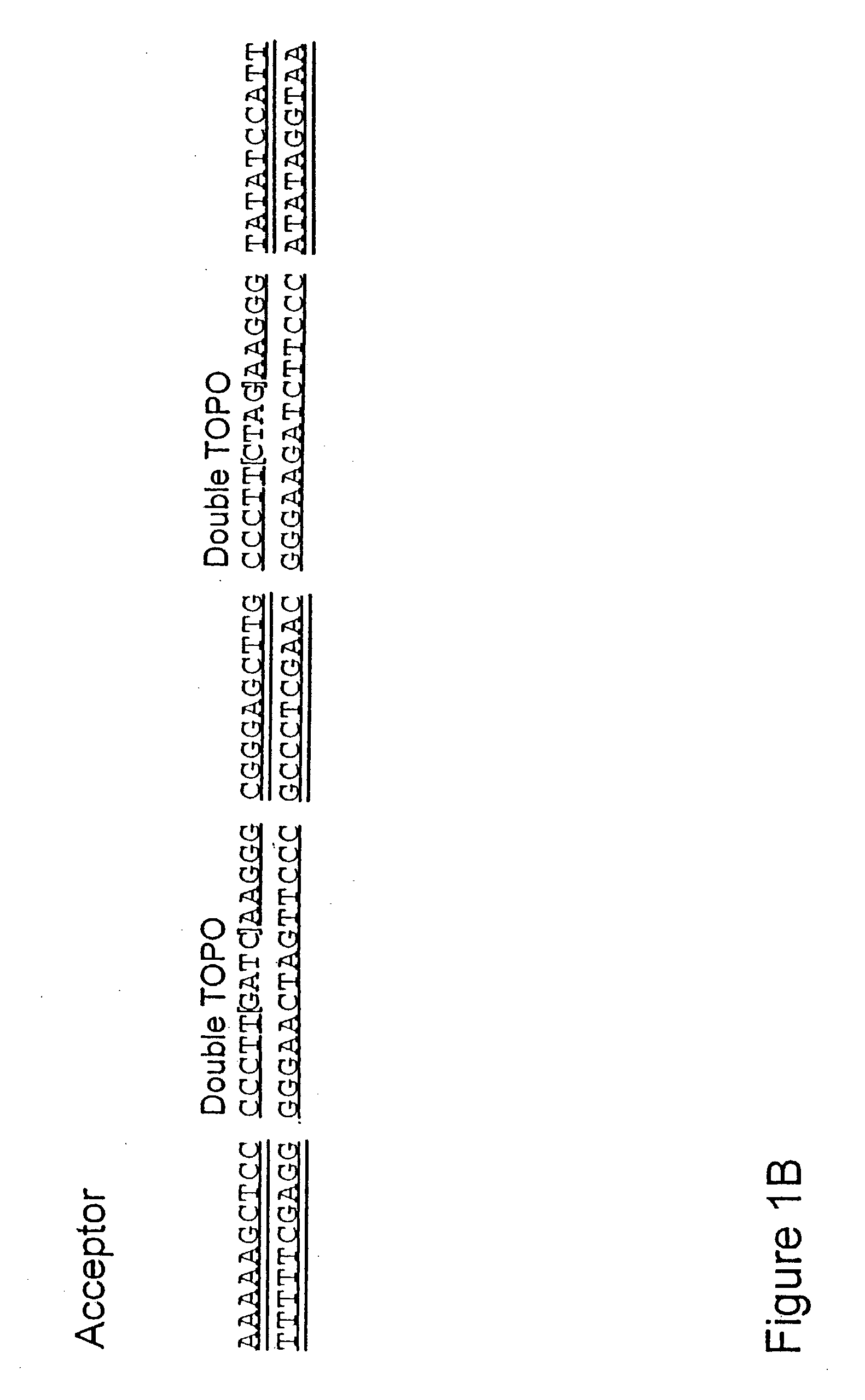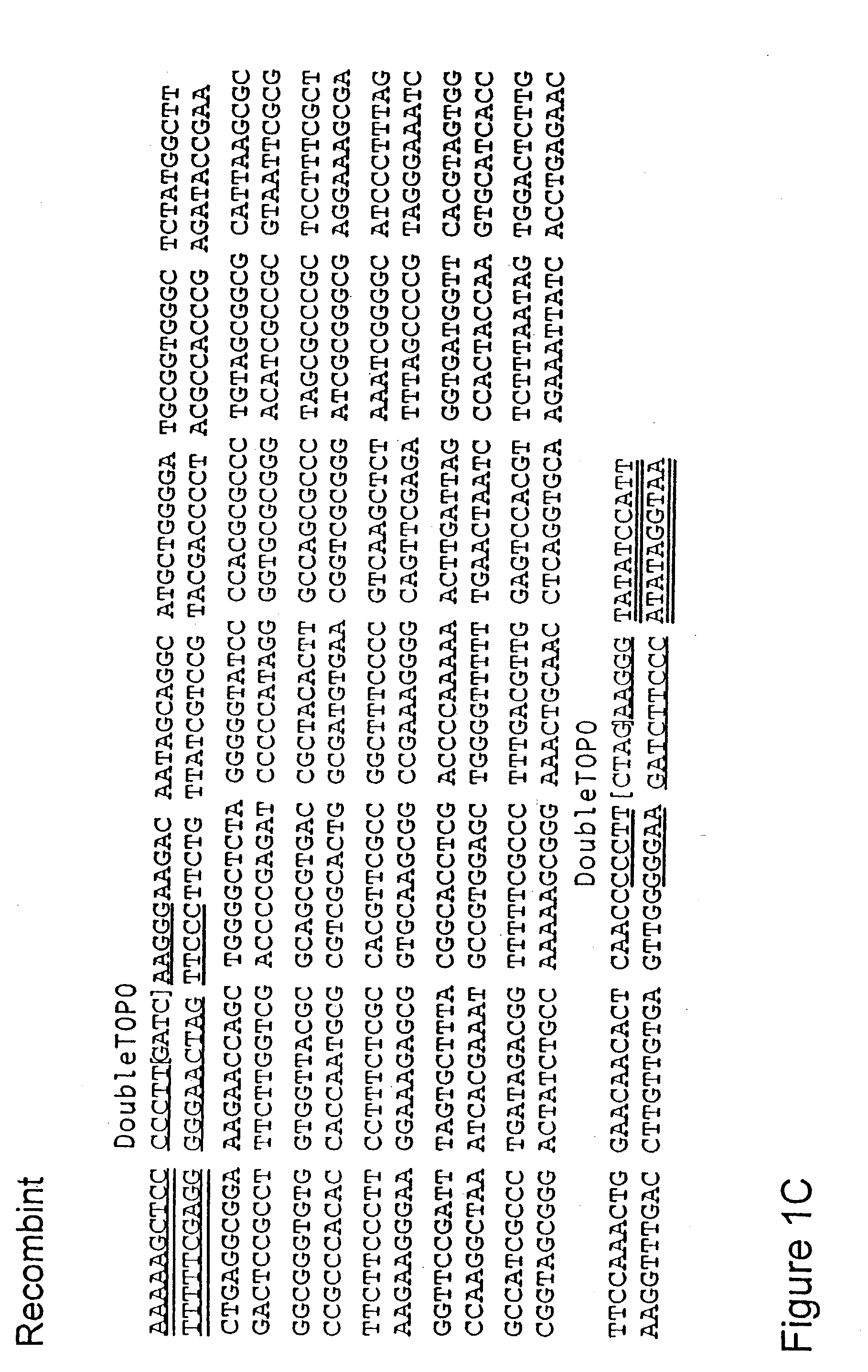System for the rapid manipulation of nucleic acid sequences
a nucleic acid sequence and rapid technology, applied in the field of cell-free subcloning system, can solve problems such as possible ligation, and achieve the effect of preventing the cloning of concatameric repeats and no impact on ligation
- Summary
- Abstract
- Description
- Claims
- Application Information
AI Technical Summary
Benefits of technology
Problems solved by technology
Method used
Image
Examples
example 2
[0082] Protocol 2: Subcloning without PCR Amplification Using Site-Specific Recombinases
[0083] A. Preparation of Donor Vector
[0084] Construct Design: A donor vector is constructed so that a transfer sequence and a unique bacterial selection marker (e.g. Zeocin.TM., Invitrogen Corp., Carlsbad, Calif.) are flanked by tandemly repeated recombinase recognition sites (for example loxP or FRT). The donor vector construct containing recombinase recognition sites is built using standard molecular biology techniques of PCR and subcloning (Ausubel et al., Sections 3.16 and 3.17). The desired transfer sequence may be subcloned into the donor vector using either standard PCR / restriction digest and ligation techniques (Ausubel et al., Sections 3.16 and 3.17) or by topoisomerase mediated cloning of PCR products as described in Examples 3 and 5 hereafter.
[0085] Donor Vector Preparation: The donor plasmid DNA is propagated in E. coli (see Example 1: Section A) and purified from 100 ml of a saturate...
example 3
[0091] Cloning PCR Amplified DNA with Gene Specific Primers and Cloning Vector.
[0092] Gene or gene fragment amplimers are created by PCR amplification using primers sequence-specific to the gene or gene of interest. Any region of DNA containing the gene of interest (designated the donor) and primers specific to the gene of interest can be used to generate the amplimer repeatedly for insertion into any or all of the acceptor vectors for a wide variety of research or production applications. No subcloning is required in this technique to transfer the gene or gene fragment of interest into the acceptor vector. The amplimer is simply copied off from the donor and the copies inserted into the acceptor vector using the procedure described below.
[0093] The DNA template should be available in sufficient quantities (at least 20 ng for plasmids) and the complete sequence of the target open reading frame should be known. DNA template may be genomic DNA, plasmid DNA, cosmid DNA or any other shu...
example 4
[0099] Cloning PCR Amplified DNA with Generic Primers and a Cloning Vector.
[0100] Gene or gene fragment amplimers are created by PCR amplification using primers of sequence specific to the donor vector and unrelated to the transfer sequence (generic). Any plasmid containing the transfer sequence (designated the donor plasmid) and primers specific to the donor plasmid can be used to generate the amplimer repeatedly for insertion into any or all of the acceptor vectors for a wide variety of research or production applications. No subcloning is required in this technique to transfer the gene or gene fragment of interest into the acceptor vector. The amplimer is simply copied off from the donor plasmid and the copies inserted into the acceptor vector using the procedure described below.
[0101] The donor plasmid should be available in sufficient quantities (at least 20 ng) and the complete sequence of the target open reading frame should be known. Isolation methods are well known in the a...
PUM
| Property | Measurement | Unit |
|---|---|---|
| Recombination enthalpy | aaaaa | aaaaa |
| Affinity | aaaaa | aaaaa |
Abstract
Description
Claims
Application Information
 Login to View More
Login to View More - R&D
- Intellectual Property
- Life Sciences
- Materials
- Tech Scout
- Unparalleled Data Quality
- Higher Quality Content
- 60% Fewer Hallucinations
Browse by: Latest US Patents, China's latest patents, Technical Efficacy Thesaurus, Application Domain, Technology Topic, Popular Technical Reports.
© 2025 PatSnap. All rights reserved.Legal|Privacy policy|Modern Slavery Act Transparency Statement|Sitemap|About US| Contact US: help@patsnap.com



